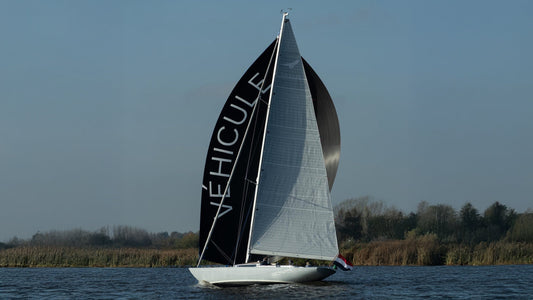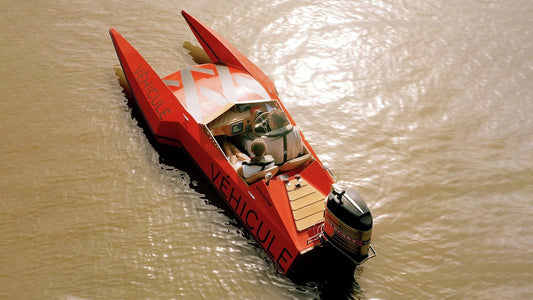The outboard engine has transformed boating, making it accessible for recreational and commercial use with its portability, power, and versatility. From humble beginnings in the late 19th century to today’s high-tech models, the outboard engine’s evolution reflects engineering innovation, market demands, and environmental pressures. Central to this story is Evinrude, a brand that played a pivotal role in shaping the industry. This article explores the history of outboard engines, Evinrude’s contributions, and the technological advancements driving the future of marine propulsion.
Early Beginnings of Outboard Engines
In the late 1800s, boats relied on sails, oars, or heavy inboard engines, which were costly and impractical for small vessels. The advent of internal combustion engines sparked interest in portable marine propulsion. In 1896, the American Motors Company adapted small gasoline engines for boats, but these lacked the integrated design of true outboards.
The first commercially successful outboard motor arrived in 1905, patented by American engineer Cameron B. Waterman. Inspired by a motorcycle engine, Waterman’s 2-horsepower, two-stroke gasoline motor weighed 40 pounds and combined an engine, propeller, driveshaft, and rudder. By 1910, the Waterman Marine Motor Company had sold thousands of units, popular among fishermen and recreational boaters, setting the stage for the outboard industry.
Evinrude’s Pioneering Role
In 1909, Norwegian-American Ole Evinrude introduced his own outboard motor, often credited with popularizing the technology. Motivated by a rowing trip to fetch ice cream for his future wife, Bess, on a Wisconsin lake in 1907, Evinrude designed a 1.5-horsepower, single-cylinder, two-stroke motor weighing 62 pounds. Launched in 1910, the Evinrude company sold over 1,000 units in its first year, with Bess handling marketing and operations. The brand’s focus on simplicity and affordability made it a market leader.
Evinrude continued innovating after selling his company in 1913. He returned in 1921 with the Evinrude Light Outboard Motor Company, introducing the 1922 “Evinrude Lightweight,” a 2-horsepower model under 50 pounds with a folding tiller for easy storage. In the 1930s, Evinrude merged with Johnson Motor Company to form the Outboard Marine Corporation (OMC). The 1933 “Folding Shaft” model allowed the motor to tilt upward to avoid underwater obstacles, a feature that became standard. Evinrude also pioneered corrosion-resistant materials like bronze propellers and aluminum alloys, enhancing durability in harsh marine environments.
How Outboard Engines Work
An outboard engine is a self-contained propulsion system mounted on a boat’s transom. Its key components include:
- Powerhead: Houses a two-stroke, four-stroke, or electric engine, generating power from 2 to over 600 horsepower.
- Midsection: Contains the driveshaft, transferring power to the lower unit.
- Lower Unit: Includes the gearbox, propeller, and skeg, converting engine power into thrust and enabling steering via a tiller or remote system.
- Additional Systems: Fuel (carburetor or electronic fuel injection), ignition (magneto or electronic), cooling (water or air), and exhaust systems enhance performance and efficiency.
Modern outboards feature digital throttle and shift, GPS integration, and touchscreen displays like Mercury’s VesselView or Yamaha’s Command Link for real-time monitoring.
The Golden Age and Industry Growth
The 1910s and 1920s saw rapid advancements, with manufacturers adopting aluminum alloys to reduce weight and corrosion. By the 1920s, outboards reached 10 horsepower, and Johnson’s 1926 “Big Twin” (6 horsepower) gained popularity for larger boats. The 1930s introduced remote steering and electric starters, though costly. By 1929, over 30,000 outboards were sold annually in the U.S., driven by fishing, racing, and leisure demand.
Post-World War II prosperity fueled a golden age. Evinrude’s 1958 “Starflite” series, with a 50-horsepower V4 engine, set benchmarks for power and design, excelling in waterskiing and competitive boating. Mercury’s 1957 Mark 75 (60 horsepower) and Honda’s 1964 GB30, the first four-stroke outboard, offered smoother operation and better fuel efficiency. Yamaha and Suzuki entered the market in the 1960s, intensifying competition.
Environmental Challenges and E-TEC Innovation
The 1970s brought environmental concerns, as two-stroke engines emitted high hydrocarbon levels. The U.S. Environmental Protection Agency’s 1990s emissions standards spurred innovation. Evinrude’s response was the E-TEC technology, launched in 2003 after the failure of its earlier Ficht direct-injection system, which led to OMC’s collapse in 2000. Acquired by Bombardier Recreational Products (BRP), Evinrude redesigned Ficht into E-TEC, a direct-injected two-stroke system that reduced emissions by up to 75%, met EPA and EU standards, and required no maintenance for three years or 300 hours. The 2005 EPA Clean Air Excellence Award highlighted its success.
The E-TEC G2 series, introduced in 2014, ranged from 115 to 300 horsepower and featured digital throttle control, integrated hydraulic steering, and a sleek design. It earned the 2015 NMMA Innovation Award for its fuel efficiency and performance. However, E-TEC faced challenges, including high-cost parts, dealer-only diagnostics, and inconsistent dealer support. While some boaters praised its reliability and lightweight design, others reported issues like coil or injector failures.
Industry Shifts and Evinrude’s Exit
Despite E-TEC’s innovations, the industry shifted toward four-stroke engines, which were quieter, simpler to maintain, and perceived as greener. Yamaha, Mercury, and Honda dominated with models like Yamaha’s F-series and Mercury’s Optimax. Evinrude’s all-in focus on two-stroke technology, without diversifying into four-strokes or hybrids, left it vulnerable. Supply chain disruptions during the 2020 COVID-19 crisis exacerbated challenges, and on May 27, 2020, BRP discontinued Evinrude production to focus on other marine products.
The Modern Outboard Landscape
Today’s outboard engines are more powerful and sophisticated than ever. Mercury’s 600-horsepower Verado V12 (2021) and Yamaha’s 450-horsepower XTO (2018) power large yachts and commercial vessels. Electric outboards, like Torqeedo’s Deep Blue and Mercury’s Avator (2022), offer zero-emission options for smaller boats. Yamaha’s hydrogen-powered outboard prototype, unveiled in 2024, signals a multi-technology approach to achieve carbon neutrality by 2050. The global outboard market, valued at USD 10.6 billion in 2024, is projected to reach USD 20.94 billion by 2034, driven by recreational and sustainable boating demand.
Smart technologies, such as IoT-based monitoring and joystick controls, enhance user experience. Lightweight materials like carbon fiber and advanced alloys improve efficiency, while stricter regulations, like EPA Tier 3 and EU RCD II, push cleaner designs. Commercial and military applications, including fishing and patrol boats, are also growing, with mid-powered engines (25-140 hp) in high demand.
The Future of Outboard Engines
The outboard engine’s legacy, from Waterman and Evinrude’s early designs to today’s eco-conscious innovations, continues to shape boating. Manufacturers are addressing sustainability and affordability challenges by developing electric, hybrid, and hydrogen-powered engines. Smart technologies like autonomous docking and predictive maintenance are emerging, with Mercury and Yamaha leading the charge.
Evinrude’s contributions, particularly E-TEC’s blend of two-stroke power and environmental compliance, left a lasting impact. While the brand is no longer in production, its innovations paved the way for today’s advancements. As the industry balances performance, cost, and sustainability, outboard engines remain central to the future of boating.









